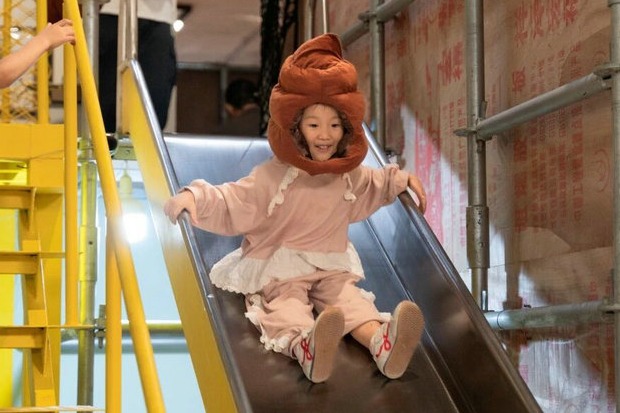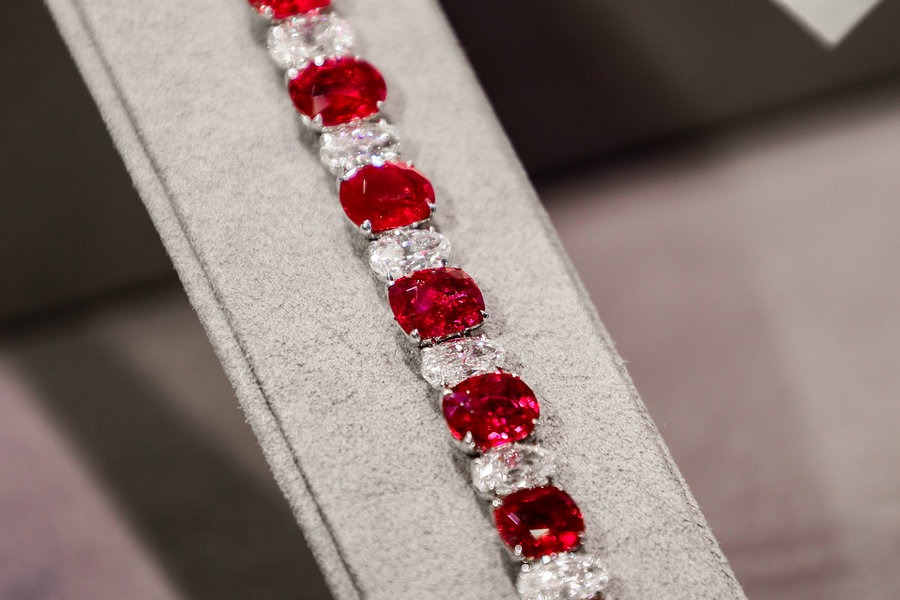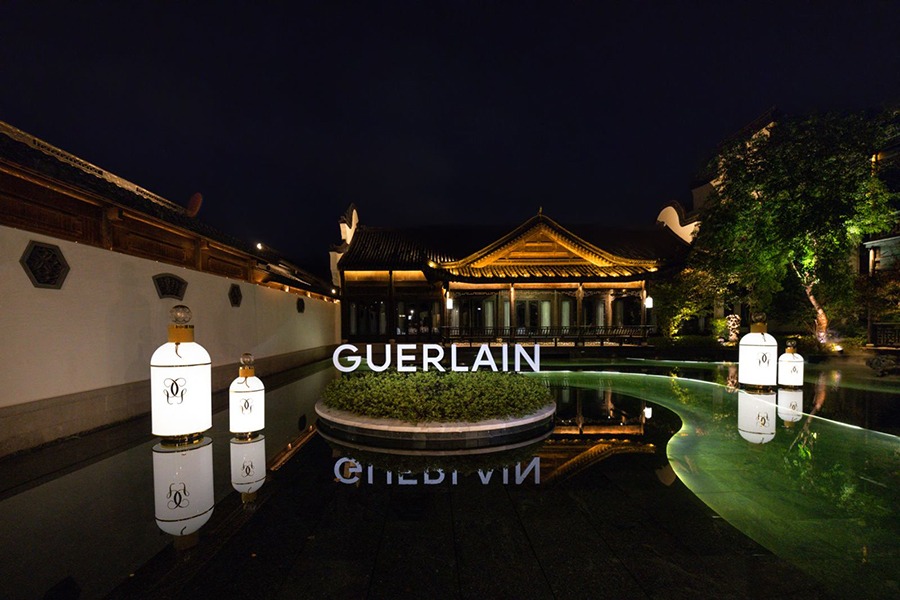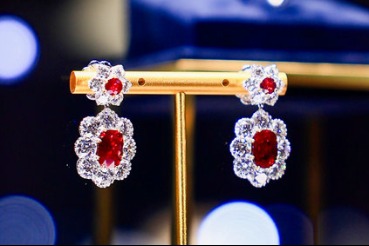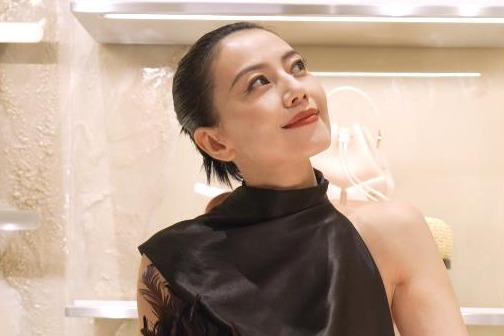For the sake of beauty

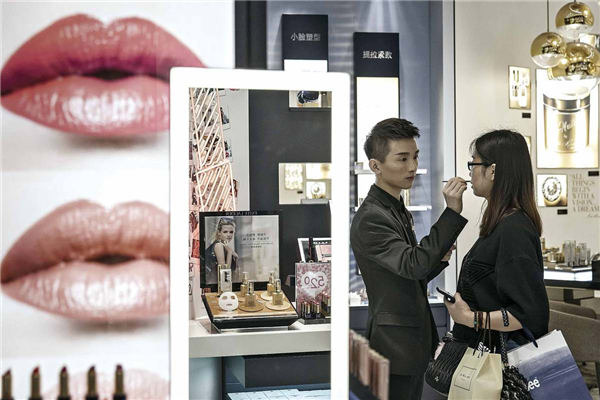
A growing number of Chinese youths are buying cosmetic products, and many of them have no qualms spending big on the premium items to achieve that perfect look.
The first thing that Li Xi did after receiving her 3,000-yuan ($476) student award four years ago was to head to beauty and cosmetics retailer Sephora.
There, the then 16-year-old spent the lion's share of her award purchasing a set of makeup by luxury brand Burberry.
"I couldn't think of another way to pamper myself with the award money," said Li, a self-confessed makeup enthusiast who has been using cosmetics since her junior high school days.
Today, the 20-year-old's interest in cosmetics has shifted from quantity to quality. Her current collection comprises premium options such as Estee Lauder's Tom Ford and La Mer, Shiseido's Cle de Peau Beaute (CPB) and Chanel.
Li is no fuerdai, which literally means "rich second generation". In fact, she hails from a middle-class family in Xi'an, the capital city of northwestern China's Shaanxi province, and receives only between 3,000 and 5,000 yuan in allowance every month from her parents.
"I've tried many products from lower-end makeup brands, but the effect was not satisfactory. Premium cosmetics can be rather expensive, but as long as it suits me and makes me look better, it's worth it. Besides, each of us has just one face and it makes me happy that it looks pretty," she said.
Younger consumers
Li is just one of the millions of youths in China whose obsession with beauty has resulted in the rapid growth of the premium cosmetics market in the country.
According to the 2017 Personal Beauty Makeup Consumption Trend Report jointly released by CBNData and Alibaba's e-commerce platform Tmall, the post-95 generation has become the main driving force behind cosmetics, especially those in the premium category, in China.
The report revealed that one in four Chinese consumers who bought cosmetics online in 2016 were born after 1995.
The amount of cosmetics bought by these individuals had also surged from a negligible sum in 2013 to 19 percent in 2016.
One of the multinational cosmetics brands that has benefitted from this trend is Shiseido.
Xie Ping, general manager of the prestige brands business division at Shiseido China, recalled 2014 as being a tough year for the company. Shiseido was then considering implementing a massive cut in marketing investment for CPB, one of the brand's higher-end cosmetic lines, because of lackluster performance over the past few years.
But thanks to the ferocious appetite of Chinese youth, CPB's sales started to pick up in 2015. The next year, its sales soared by nearly 60 percent, outperforming many other brands under Shiseido. Data from Tmall shows that 61 percent of CPB's sales on its platform came from consumers aged between 18 and 29.
Xie admitted she was surprised at the spending prowess of the post-95 generation as CPB is branded as a luxury line that is catered to more mature consumers. The most basic CPB product costs around 950 yuan.
Chen Xi, the general supervisor of personal beauty and cosmetics sales on Tmall shared a similar observation with CBN Weekly.
She noted that the platform's sales data have shown that consumers buying products by luxury cosmetic brands are between five and 10 years younger than the brands' target audience.
An example would be Chen Chen, a 19-year-old freshman at Shanghai Maritime University who spent around 5,000 yuan during last November's Single's Day, the online shopping festival by Alibaba, on the makeup product considered to be the most essential among Chinese consumers — lipstick.
According to the Color Cosmetics China 2017 report by global market research agency Mintel, lipsticks accounted for 22 percent of the total market value in 2016, up from 15 percent in 2014.
"Lipstick usage is nearly universal in China, with 95 percent of urban Chinese female consumers having used lipstick/lip gloss in the past six months…it is also considered to be the most important color cosmetic product among urban Chinese women (when limited to applying up to three types of makeup)," the report said.
Online influencers
The Mintel report also pointed to beauty influencers and celebrities as some of the key drivers behind the burgeoning beauty market, though word of mouth through family members and friends, and recommendations by cosmetics store staff are still the dominant factors.
To Li, online celebrities and influencers are valued by those of her generation because the information they provide are based on experience that they can see.
"I like to read online articles or watch videos posted by makeup bloggers or celebrities who share their experiences with different types of makeup. The information is more credible as you can see these individuals trying the products on their faces," said Li.
In January, Chinese luxury lifestyle portal Jing Daily listed Zhang Mofan as one of China's most successful beauty bloggers. The Beijing-based influencer has 7 million followers on the social networking platform.
Her massive following has made her a fortune. Zhang's beauty products, which can be bought from her online store on Alibaba's e-commerce platforms, recorded more than $18 million in sales in 2016, according to Jing Daily.
Another Chinese beauty blogger, Fan Jiajun, weighed in on the matter.
"You can tell that the public sentiment is high now. People of my age or younger are showing an increasing interest in skin care and makeup and they are not limited to basic products such as foundation and lipsticks.
Instead, they are striving to attain a more comprehensive collection that includes delicate eye makeup, blusher, highlighter and bronzer," said Fan.
The 25-year-old, who started her blog in 2013, said that it wasn't until 2016 that her follower numbers spiked. She now has more than 380,000 followers on Sina Weibo.
"The public has a higher acceptance of makeup now than ever before. They are willing to try the brightest and most in-fashion lipstick colors to reflect their personality," she added.
Mintel research has found that the growing acceptance and demand for cosmetics has been good news to not just international brands but local ones as well.
"In recent years, we have seen the growth of Chinese brands, not only in the color cosmetics category, but across beauty and personal care categories," said Jessica Jin, associate beauty director at Mintel, in the report.
"Brands should leverage quick innovations with affordable prices and provide as many kinds of make-up options as they can in order to attract younger consumers in their 20s who are still in the early stages of finding the most suitable make-up look."


















